A year without cruising: No ‘crystal ball’ to tell when sailing could restart amid COVID-19
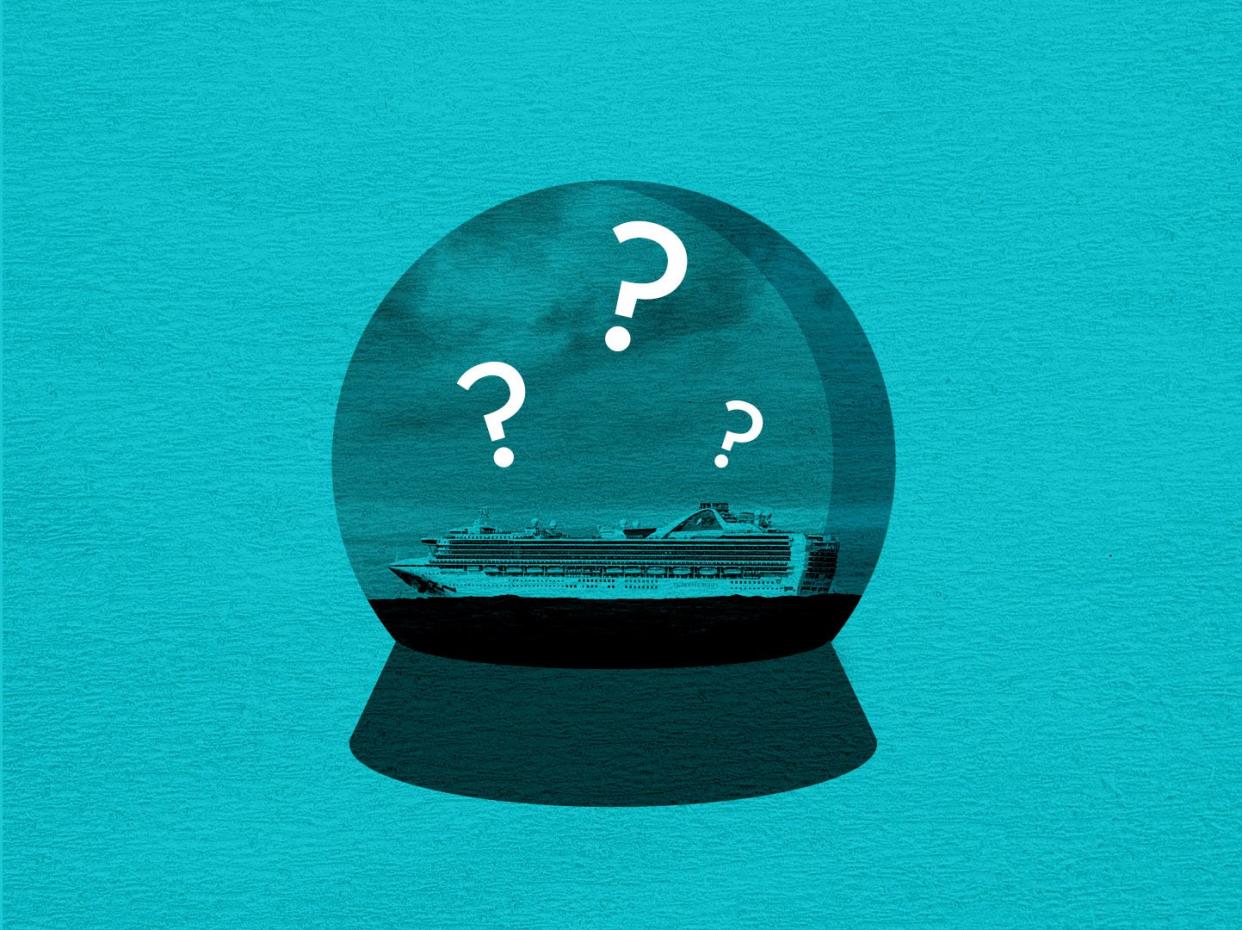
Not a single oceangoing cruise ship has departed with passengers from a U.S. port in the past year.
And that's caused havoc in the cruise world – including for passengers.
Take Nargis Kheraj, 70, from New Brunswick, Canada, for example. She has had 28 cruises canceled since the start of the pandemic. Kheraj told USA TODAY that as a result of schedule changes and rebookings, she had 18 canceled in 2020 and 10 already canceled in 2021.
Kheraj has four more cruises booked in 2021, with departures beginning in November.
And it hasn't been smooth sailing for the industry as a comeback still appears distant – even after the cruise industry last month attempted to push the Centers for Disease Control and Prevention to allow a July restart. On Friday, the CDC issued technical guidance for cruise lines to address before they can resume cruising but did not specify when cruise ships would actually be able to sail.
Cruise Lines International Association, the leading trade organization for the industry, responded to the CDC's guidance Monday expressing disappointment. The guidance lacked clarity on timing and gave "no reasonable timeline" for the return of cruising, the association said in its statement, provided by Bari Golin-Blaugrund, vice president of strategic communications and public affairs.
"Not in my wildest nightmare did I imagine that this would last many months, never mind more than a year," Richard Fain, CEO of Royal Caribbean Group, told USA TODAY last month.
And yet, there is no "crystal ball" that can tell when sailing might restart, Kelly Craighead, president and CEO of CLIA, said in February.
"I couldn't begin to speculate as to why the cruise industry is being held out in ways that other industries are not," Craighead told USA TODAY.
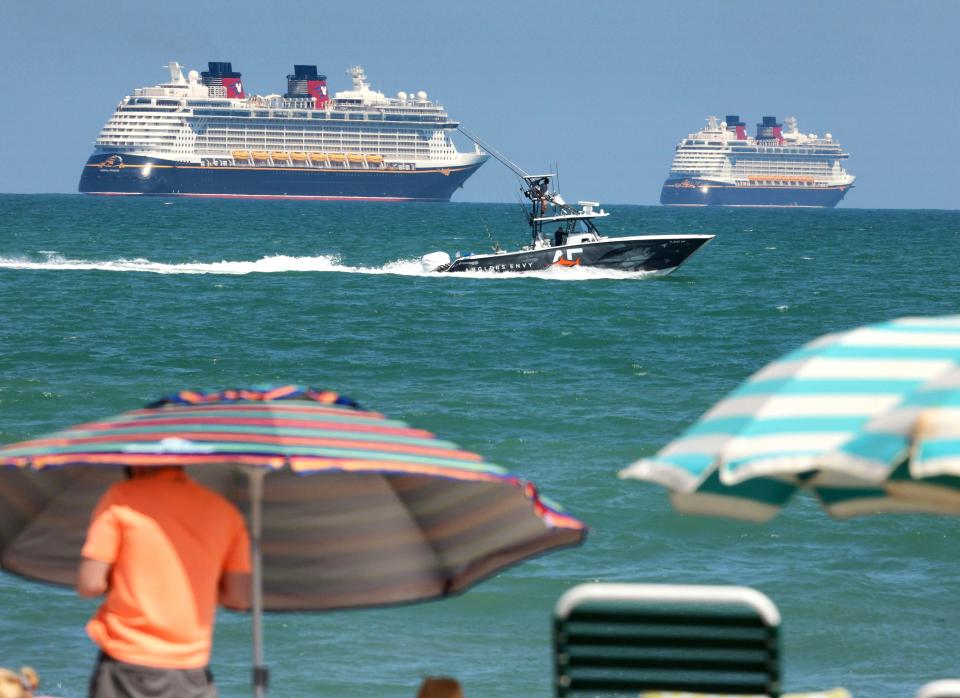
Cruise industry among first hit by pandemic
When the first case of COVID-19 was identified in a passenger that had been on board Princess Cruises' Diamond Princess cruise ship in early February last year, no one could have predicted what would come next – not even those on board.
Gay Courter, a passenger on the Diamond Princess who has since written a book about her experience, told USA TODAY that the situation was "terrifying" because so little was known about the coronavirus that had taken hold in Wuhan, China.
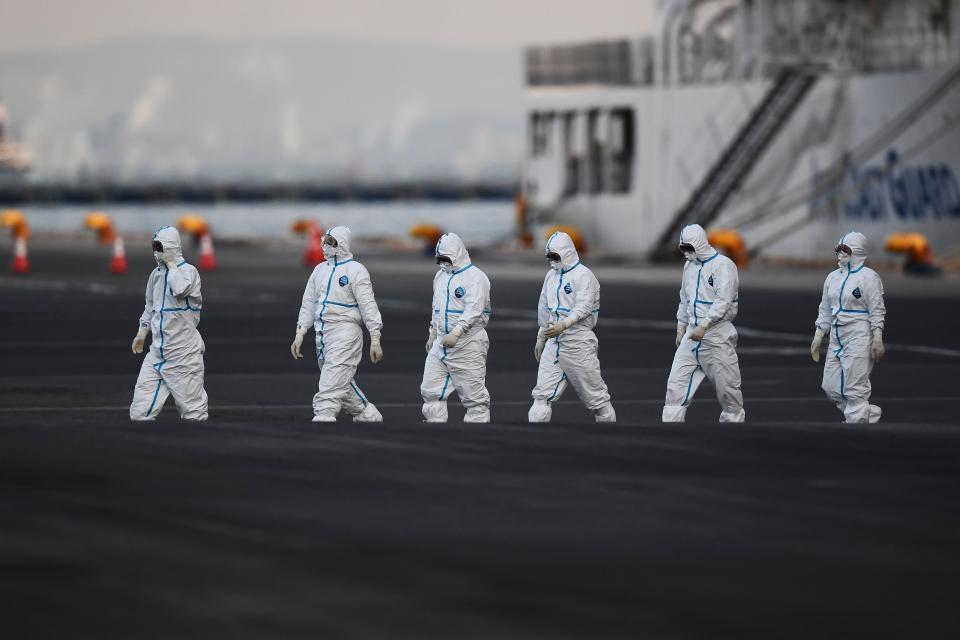
"We were watching ambulances pull up to the ship from our balcony, and the pier was filled with emergency workers in various-colored hazmat suits," Courter said. "It felt like we were observing a catastrophe movie. Since we were unable to leave our rooms, we wondered how people were getting sick and whether we would soon be victims."
Courter and her husband were two of the 2,666 passengers and 1,045 crew members on board the Diamond Princess when a passenger who had disembarked tested positive for COVID-19. Passengers were quarantined as a result. That quarantine went "awry," according to Dr. Anthony Fauci, director of the National Institute of Allergy and Infectious Diseases at the National Institutes of Health.
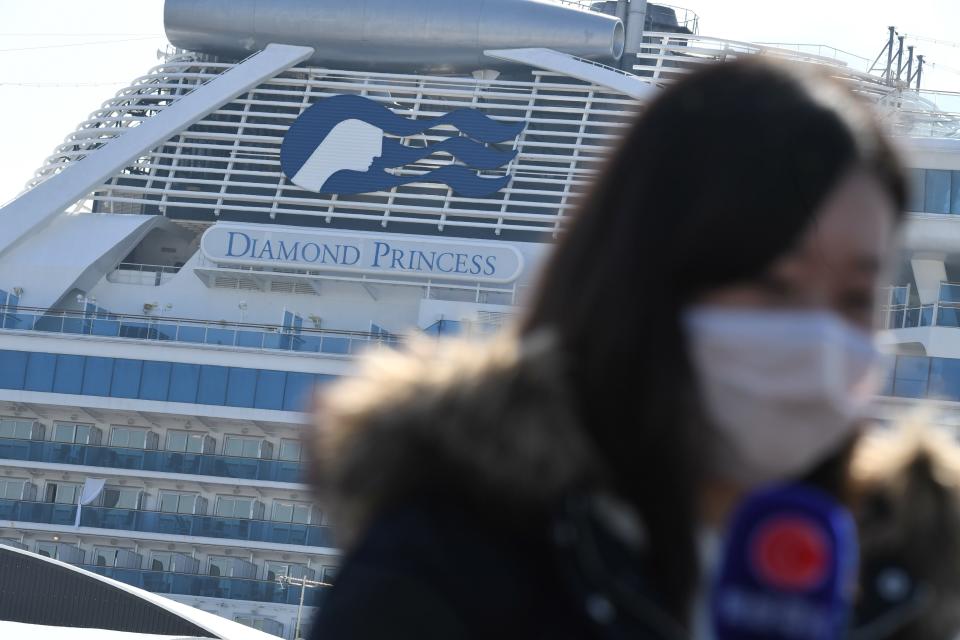
"It never occurred to us that millions would contract the disease or that a year later more than 500,000 Americans would be dead," Courter said.
Eventually, the coronavirus that causes COVID-19 spread to more than 700 people who had been on board the Diamond Princess, killing more than a dozen, according to John's Hopkins data. At one point, the Diamond Princess had the largest concentration of COVID-19 cases outside of mainland China.
At the same time, ships across the world found themselves in limbo as ports refused to allow them to dock and disembark over fear of spreading the virus. New symptoms and cases emerged on board more ships and prompted additional quarantines, frustration and panic.
'We do a lot of crying': American couple in quarantine for coronavirus separated in Japan, US
Then, on March 13, 2020, more than a month after that first case emerged, an announcement came from CLIA: Cruises departing from the U.S. would halt operations temporarily.
The CDC issued a "no-sail" order the next day.
Eventually, cruise lines returned passengers home. But the struggles for the industry were only beginning.
For months, thousands of crew members from all over the globe remained in limbo, stuck on board ships, blocked from returning home by changing travel restrictions. Some crew members were without pay, more faced frustration and mental health challenges resulting from months of quarantine restrictions and isolation with broken promises of returning home to their families. Multiple crew members died at sea, including one woman who jumped overboard.
A year later, the restart of normal cruise operations remains uncertain.
Cleaning a floating petri dish: How is a cruise ship sanitized after a coronavirus outbreak?
By the numbers: What a yearlong shutdown has done to the industry
Between April 2020 and March 2021, an estimated 32 million people would have sailed on cruise ships around the globe if the pandemic didn't happen, according to Christian Savelli, vice president of research and business analytics for CLIA.
While some cruising has resumed in Europe and Asia, Savelli estimates that the net loss of cruisers who would have sailed in is between 30 million and 31 million people on an estimated 14,000 to 15,000 cruises on CLIA member vessels. CLIA members make up 95% of oceangoing cruise capacity.
But the toll goes beyond lost vacations. There's an astronomical economic impact, as well.
"Beginning in mid-March 2020 up until the end of March 2021, the estimated direct impact of the suspension of cruise operations in the USA will be a loss of $17 billion in direct spending and 114,675 American jobs, representing $5.5 billion in direct wages," Savelli said.
Factoring in the indirect impact raises that estimate to a loss of nearly $39 billion, representing 301,000 American jobs.
Could the early COVID-19 travel response have been different from the cruise industry?
Fain said that he wished he knew a year ago what he knows now.
"We were naive and assumed this was something much more minor and much more temporary," he said.
Craighead said that "hindsight is 20/20" when it comes to the cruise industry's response to the COVID-19 pandemic and added the timing of the Diamond Princess outbreak was "unfortunate."
"COVID was so new at the time that unfortunately now cruise ships have this linkage to COVID that's totally disproportionate to where we find ourselves today," she said.
Frank Del Rio, CEO and president of Norwegian Cruise Line Holdings Ltd., echoed the sentiment.
"Look (the shutdown has) been disappointing, but we understood. We understood that at the beginning we didn't know exactly the science behind the virus," Del Rio told USA TODAY.
But the industry shutdown has allowed cruise lines to learn from experts as the pandemic swept the globe.
"We were able to take the opportunity to deeply engage," Craighead said. "As the world was learning about COVID, we were, too, but we had the ability to really be thoughtful and mindful about enhancements to put in place."
In September, CLIA announced health protocols requiring crew and passenger COVID-19 testing, mask-wearing, enhanced cruise ship ventilation, stringent response procedures and shore excursion protocols.
While CLIA hasn't issued a vaccine requirement, some cruise lines have taken action and made requirements on their own.
Virgin Voyages, Richard Branson's adult-only cruise line, for example, will require all passengers and crew to be vaccinated against COVID-19 before boarding, the company announced last month. And Monday, Norwegian Cruise Line Holdings Ltd. also added a vaccine requirement for all passengers and crew.
And Royal Caribbean Group has announced a vaccine requirement for some of its ships, including its newest ship set to sail in Israel this May, and on vessels departing from the Bahamas, Bermuda and St. Maarten.

Royal Caribbean Group and Costa Cruises, a subsidiary of Carnival, have also said they intend to require vaccines for crew members.
As the pandemic progressed, cruise lines have shed ships and subsidiaries and canceled more sailings into spring and summer as they work with the CDC to meet their requirements to hit the high seas with paying passengers under the agency's "conditional sailing order." The order, announced in October, requires cruise lines to abide by CDC-instituted phases for a return to cruising but hasn't allowed them to resume sailing yet. It also included recommendations for testing, quarantining, monitoring, mask-wearing and social distancing.
The additional guidance announced Friday requires an increase in cruise COVID-19 reporting frequency to daily, updates a color-coding system used to classify ships related to COVID-19 and addresses routine testing of crew based on a ship's color. It also further clarifies lab parameters and COVID-19 testing options.
Cruisers stuck in cancellation loop
The shutdown hasn't been easy on cruisers like Kheraj, but that's not deterring her from booking more cruises in the future.
In addition to her four cruises booked for 2021, in 2022, Kheraj has an additional nine cruises booked in different parts of the world, and in 2023 she already has two more booked – totaling 15 future cruises lined up.
"Initially, I was really upset when all the ones in the spring were canceled, but as the COVID crisis got worse, I sort of accepted the fact that I would not be cruising," she said, noting that she's going with the flow and hasn't stopped booking, often using future cruise credits to book new voyages.
"It is what it is," Kheraj said. "On the bright side, I get to work in my garden."
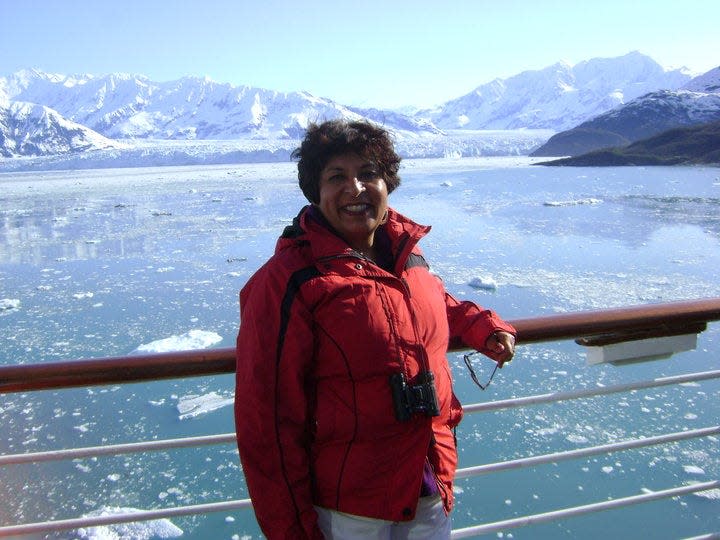
Kheraj's situation isn't unique. Like her, many other cruisers are stuck in a cycle of booking, learning of cancellations and rebooking.
Josh Gates told USA TODAY that he has had five cruises canceled so far during the pandemic, and he's moved three from this year to next year.
"If the predictions are right of a rapid increase in vaccination between now and early summer, I’d be comfortable traveling by summer," Gates said.
Jean Lightfoot, from New Hampshire, had three cruises canceled in 2020 and a few more canceled in 2021 – one of which Lightfoot pulled out of rather than waiting for the cruise line to cancel.
SUBSCRIBE: Help support quality journalism like this.
Lightfoot has also continued to reschedule her cruises into the coming months and next year.
While many cruisers are adamant that they want to get back to sea and are willing to rebook rather than opt for a refund, some are more cautious and are looking for specific requirements to be announced before reboarding.
Courter, who was on board the Diamond Princess when COVID-19 started to spread, said she will only be ready to get back on a cruise ship when everyone is vaccinated.
"In order for us to feel safe, everybody, including the crew, would have to show a vaccination certificate," she told USA TODAY. "We have been vaccinated already and have that paperwork. Years ago when we traveled, we carried the yellow vaccination cards that proved we had been vaccinated for yellow fever, typhus, smallpox, etc."
There's no reason not to establish that kind of vaccination proof again, she added.
What did the cruise shutdown do for public health?
Dr. Martin Cetron, director of the CDC's Division of Global Migration and Quarantine, told USA TODAY that no one could have predicted, from the pandemic's onset, the impact it would have on public health and the cruise industry.
And while it's been tough on the cruising world, stopping cruising last March also had a hand in stopping the spread of COVID-19 – though that impact is difficult to quantify.
Because no passengers have boarded oceangoing cruise ships departing from U.S. ports in the last year the number of passenger infections, hospitalizations and deaths has dropped to zero. And cases among crew members have dropped to what Cetron called "record low" numbers since the CDC's implementation of the "no-sail order" and then the "conditional sail order."
As a result, any strain faced by local port communities' resources as a result of COVID-19 on cruise ships such as medivacs and hospitalizations has also ceased to be a problem.
And, "hidden infections" (or asymptomatic cases), which are part of the reason the COVID-19 and cruise ship combo are dangerous in terms of amplifying and accelerating spread, aren't an issue either.
"Cruising safely and responsibly during a global pandemic is very difficult," Cetron said. "We know that cruise ship travel significantly increased the scope and impact of the early phases of the COVID-19 pandemic."
But cruising won't be shut down forever. The CDC's "conditional sailing order" gives what Cetron calls a "safer path to recovery" for the industry. Vaccinations, he added, will add a "critical layer of protection in combating morbidity and mortality."
There’s still no set timeline for returning to cruising in US
While cruising hasn't returned in U.S. waters and cruise lines aren't able to name a restart date specifically, Craighead and Fain expressed optimism.
"I think that we are cautiously optimistic," Craighead said. "We look forward to working with the Biden administration who we understand, like other governments, (is) committed to getting their arms around the rate of the spread of the virus and the distribution of vaccines."
Tracking COVID-19 vaccine distribution: How many people have been vaccinated in the US?
Fain, whose company has committed to requiring vaccines on some of its ships, cited vaccines as a transformational source for the dialogue around cruising's return, calling them the "ultimate weapon" in the fight against COVID-19.
"It feels good to be coming out of a hole as deep as it appeared only months ago," Fain said.
If you or someone you know may be struggling with suicidal thoughts, you can call the U.S. National Suicide Prevention Lifeline at 800-273-TALK (8255) any time day or night, or chat online.
Crisis Text Line also provides free, 24/7, confidential support via text message to people in crisis when they dial 741741.
This article originally appeared on USA TODAY: Cruises' COVID 'nightmare': It's been a year with no restart in sight

